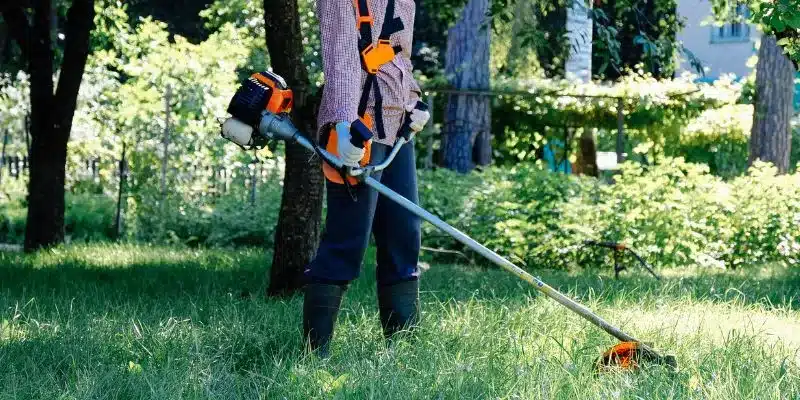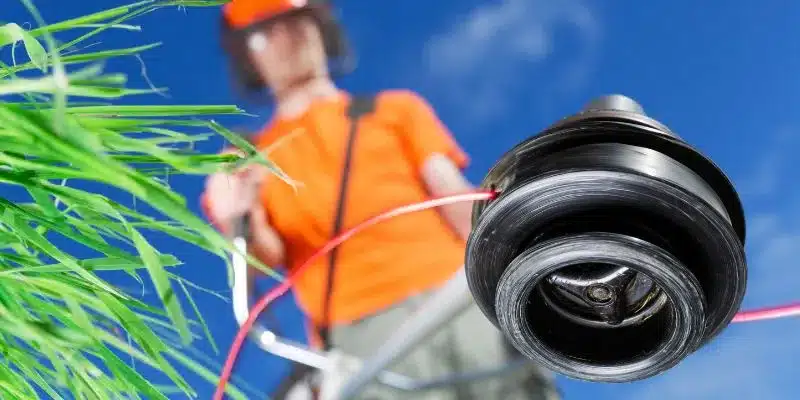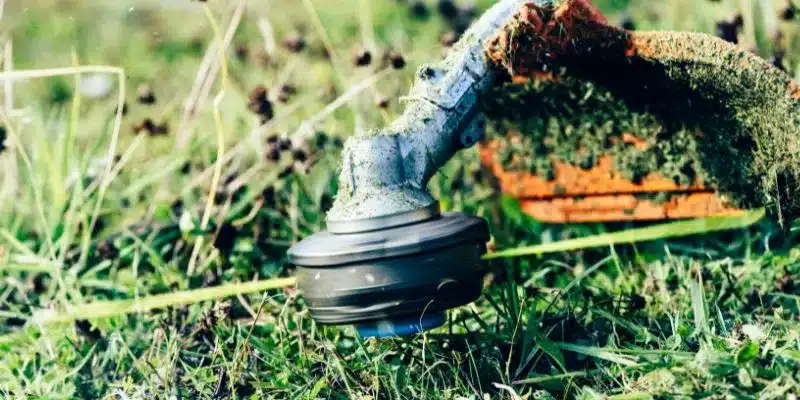Last Updated on March 22, 2024 by Sharaj
If you have a garden or lawn, keeping it neat and tidy is essential for a beautiful outdoor space. While mowing takes care of the grass height, using a strimmer helps you tackle those hard-to-reach areas, edges, and corners with precision.
A strimmer, also known as a weed trimmer or string trimmer, is a versatile tool designed to trim grass, weeds, and small plants.
In this article, we’ll dive deep into the art of using a strimmer, covering everything from selecting the right equipment to mastering proper techniques for a flawless finish. So, let’s get started!
How to Use a Strimmer

Using a strimmer effectively requires understanding various aspects, such as equipment selection, safety precautions, and the right techniques for different tasks.
Let’s explore each step in detail:
Understanding Your Strimmer
Before diving into how to use a strimmer, it’s crucial to know the different types available and their features. Strimmers come in various designs, including electric-powered, battery-powered, and petrol-powered strimmers.
Each type has its advantages and limitations, so choose one that suits your lawn size, terrain, and personal preferences.
Safety First
Safety should always be your top priority when operating any gardening equipment, and a strimmer is no exception. Follow these safety tips to ensure a risk-free trimming experience:
- Always wear appropriate safety gear, including safety goggles, ear defenders, gloves, and long pants.
- Keep bystanders, children, and pets away from the working area.
- Check the strimmer’s safety guards and ensure they are functioning correctly.
- Be cautious of flying debris, and avoid pointing the strimmer towards yourself or others.
- Do not use the strimmer during adverse weather conditions or on wet grass.
Choosing the Right Cutting Line
The cutting line of your cordless strimmer plays a vital role in its performance. Opt for the right cutting line thickness for the tasks you intend to perform.
Thicker lines are suitable for dense weeds and tougher vegetation, while thinner lines are ideal for lighter trimming.
Handling the Strimmer
Proper handling of the strimmer is crucial for efficient and safe operation. Follow these guidelines:
- Hold the strimmer with both hands to maintain balance and control.
- Position the strimmer parallel to the ground for even cutting.
- Move the strimmer from side to side in a sweeping motion for the best results.
- Maintain a steady pace to achieve uniform cutting.
Trimming Techniques

Depending on the areas you need to trim, different techniques can be employed. Here are some common trimming techniques:
Edging: For a well-defined edge along paths and driveways, hold the strimmer vertically and allow the edge of the cutting line to trim excess grass.
Scything: For larger, dense areas of grass or weeds, use a side-to-side motion, like a scythe, to cut through the vegetation efficiently.
Tapering: To create a seamless transition between the trimmed and untrimmed areas, tilt the strimmer at an angle and trim with care.
Sweeping: For clearing grass and weeds from larger areas, use a sweeping motion, starting from one end and working your way across.
Maintenance and Storage
To ensure the longevity of your strimmer and consistent performance, regular maintenance is essential. After each use, clean the strimmer and remove any grass or debris.
Check the cutting line for wear and replace it when necessary. Store the strimmer in a dry and secure place, away from direct sunlight.
Frequently asked questions
Can I use a strimmer on uneven terrain?
Yes, strimmers are designed to handle various terrains. However, be cautious while working on steep slopes and uneven surfaces to avoid accidents.
How often should I replace the cutting line?
The frequency of replacing the cutting line depends on usage. As a general rule, replace it whenever it becomes worn or breaks frequently.
Is it necessary to wear safety gear while using a strimmer?
Yes, wearing safety gear is crucial to protect yourself from flying debris and potential accidents.
Can I use a petrol-powered strimmer indoors?
No, petrol-powered strimmers produce exhaust fumes, making them unsuitable for indoor use. Stick to electric or battery-powered options for indoor tasks.
What should I do if the strimmer’s cutting line gets tangled?
Turn off the strimmer, disconnect the power source, and carefully untangle the cutting line before resuming work.
How do I store the strimmer during the winter months?
Before storing the strimmer for winter, clean it thoroughly, remove any fuel, and store it in a dry and cool place.
Conclusion
Mastering the art of using a strimmer can transform your lawn maintenance routine, making it more efficient and enjoyable. Remember to prioritize safety, choose the right equipment, and practice various trimming techniques for different areas.
With this comprehensive guide, you are well-equipped to tackle any trimming task and maintain a beautifully manicured lawn all year round.

